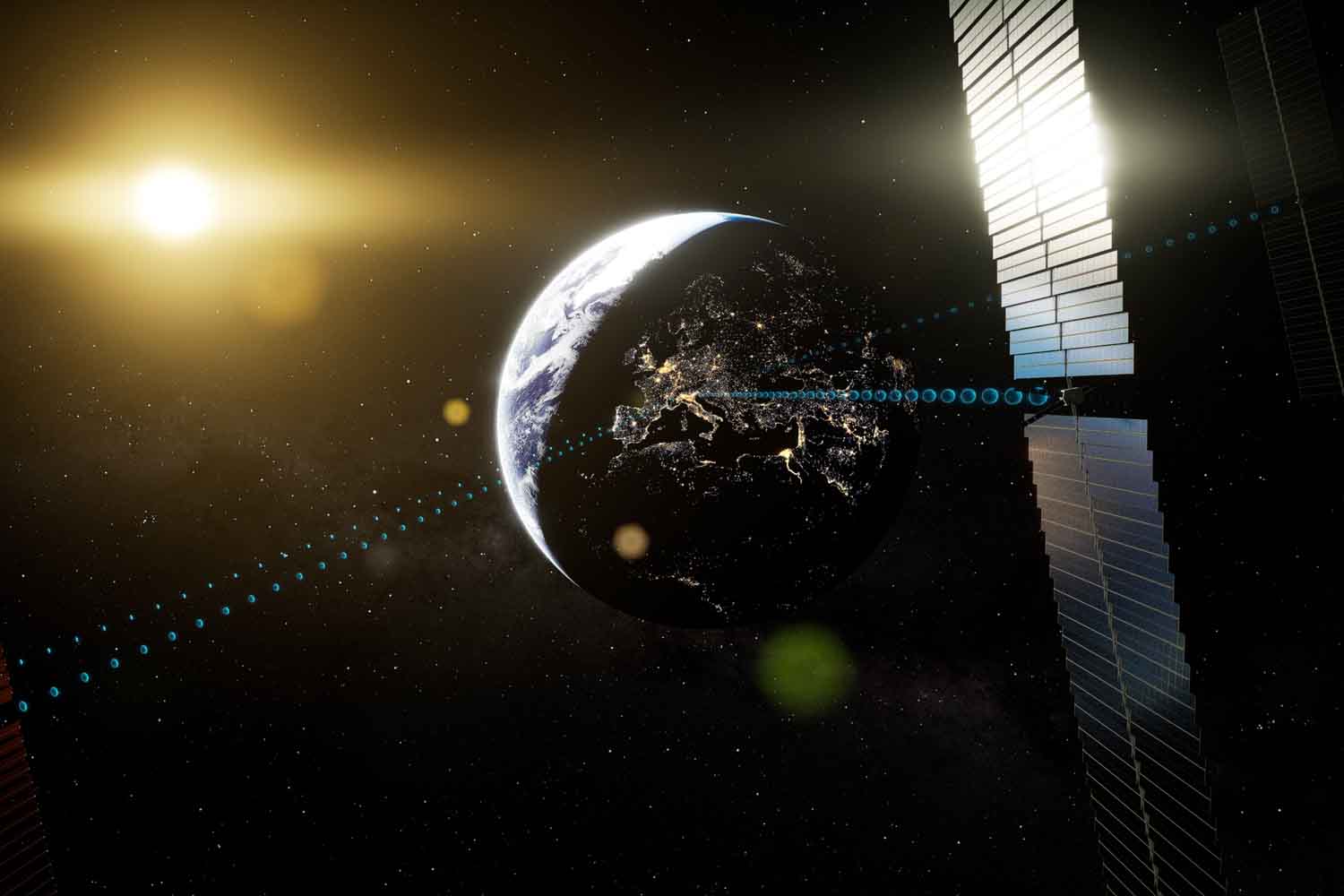Revolutionary projects like Solaris and Dyson Swarm could transform the world's energy system, delivering continuous power directly from space.

©ESA
Envision a world where solar power is captured from space itself, unaffected by clouds, day-night cycles, or seasons. What was previously pure science fiction has been becoming increasingly plausible with developing technology and pioneering projects like the European “Solaris” initiative, backed by the European Space Agency (ESA). The project involves the deployment of satellites into geostationary orbit, approximately 22,236 miles above Earth, which are capable of collecting unbroken sunlight.
How would this work?
The solar energy collected in space would be converted into microwaves using transmitting antennas, which would then be beamed back to Earth. On Earth, large receiving antennas would convert the microwaves into electricity, providing a continuous, stable source of energy available 24 hours a day. This technology could revolutionize the global energy system, eliminating many of the limitations currently faced by terrestrial solar power plants.
Construction of solar structures in space is a gigantic undertaking. Such solar panels would need to be built in space itself, being capable of withstanding space debris and micrometeoroids. Special robot maintenance systems are in the pipeline but are currently experimental.
Another critical concern concerns the microwaves received from outer space and penetrating to the Earth. Even though initial studies have shown no credible threat to human health, there still needs to be more assessment of the impact of radiation on organic matter, as well as its viability for satellite communication and air traffic. Widescale testing will only be possible after further research and acceptance by health authorities.
The dyson sphere: tapping the energy of one star
One of the most ambitious space energy projects is the concept of the Dyson Sphere brought forth by astrophysicist Freeman Dyson in 1960. The original idea created a structure that would completely surround the sun to capture its energy. Although building an actual solid sphere is still out of the question, a more practical alternative—the “Dyson Swarm”—can be built using a series of solar platforms orbiting the star.
Such an enterprise would most likely begin by excavating Mercury, the sun’s innermost planet, with a wealth of materials worth in solar panel construction. Production and deployment would be automated through high-tech robots and few human overseers. Energy amassed could not only be used to meet Earth’s needs but also for projects as grand as terraforming other worlds or building vast space installations.
An unlimited capacity, but at what cost?
Even a small fraction of the energy of the sun is sufficient to power our planet multiple times compared to today’s consumption. This power will power space cities and industry, and reduce consumption of fossil fuels significantly.
However, the formation of a system from space solar power raises a host of issues. Efficient energy transmission over vast distances is one field still evolving. In addition, the worldwide cooperation required to coordinate such gigantic schemes—and environmental concerns surrounding Mercury mining—raise basic ethical and political issues.
In spite of these difficulties, solar energy collected from space is one of humankind’s most ambitious endeavors ever. If developed, the needed technology and infrastructure, we could actually come very close to tapping an unlimited energy source that will be able to satisfy the world’s needs which are increasingly greedy for resources.
Source: ESA
